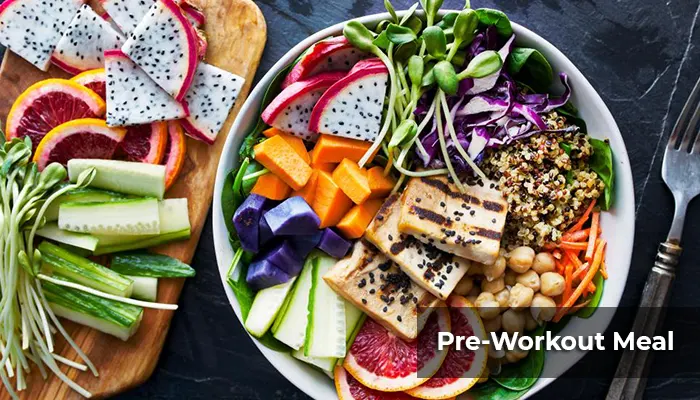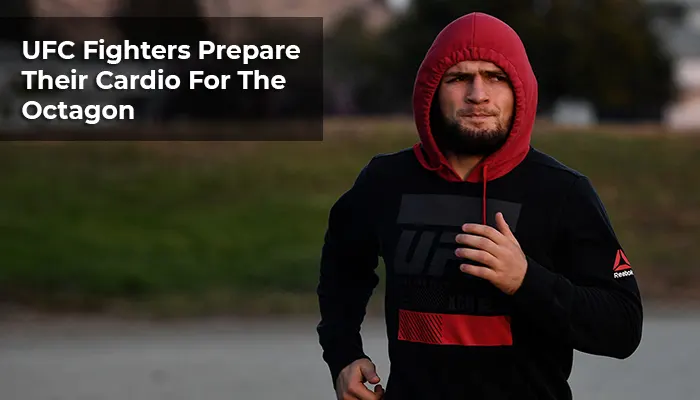MMA fighters are some of the most elite athletes in the world. Let’s face it, it’s not easy to be training for months for a fight — a fight that can very well cost life and limb. MMA fighters, quite simply, have some of the hardest jobs in the world.
They are constantly on their feet, fighting one another if not training to fight one another, often at great risk to themselves. But even the best fighters need time off to recover and recharge. And that time off includes a very strict diet plan that will put them in the right condition quickly and safely while still getting all the nutrients they need to do their thing in the ring.
Indeed, an MMA fighter’s diet and workout routine are some of the most important aspects of their training. In fact, it’s one of the most important aspects of their entire life. Their diet before a fight can affect how they perform in the ring and how quickly they recover from any injuries or illnesses.
Additionally, the diet of an MMA fighter is very regimented, and while it has changed over the years, it is still based on the same principles as any other athlete’s diet.
For this article, we’ll take a look at some of the staples of a fighter’s diet, and see what these elite athletes do to make sure they are getting all the nutrients they need.

Pre-Workout Meal
A pre-workout meal is important to elite athletes such as MMA fighters because it can help them maximize their energy and focus before a workout. An athlete’s pre-workout meal should be light, high in protein, and low in carbs. It should also be high in electrolytes and contain nutrients like fiber, B vitamins, and protein. Athletes will often use sports drinks as a pre-workout meal. Sports drinks are an excellent option for pre-workout meals because they provide carbohydrates and electrolytes. This is especially true for MMA fighters because they can easily get dehydrated during a fight or sparring. However, some athletes find that the sugar content of sports drinks can cause a spike in blood glucose levels.
See also info about using anabolic steroids
A pre-workout meal helps fighters replenish their energy stores before training, which can improve their performance during the actual workout or sparring session.
Pre-workout meals are also important because they help MMA fighters recover faster after a workout. Indeed, an MMA fighter who has just finished a tough training session can experience muscle soreness and fatigue. When these symptoms occur, the body uses energy from its glycogen stores to fight the soreness and fatigue. If an athlete eats a pre-workout meal, this will help replenish the glycogen stores.
Nitrate-Rich Foods and Liquids
Nitrate-rich food or liquids such as beetroot juice, spinach, green leafy vegetables, and almonds can be helpful for athletes especially during pre-workout because they raise nitric oxide levels in the body.
Nitric oxide is a chemical that helps to relax blood vessels, which makes them more flexible and can improve blood flow and oxygenation, lower blood pressure, and improve brain function. For athletes, Nitrate-rich foods or liquids allow more oxygen to be delivered to the muscles and more nutrients and energy to be delivered to the working muscles, allowing them to perform their best and get the most out of their workout.

Recovery Phase
The body’s recovery phase following any MMA workout or sparring session is important, and fighters will often load up on certain foods to help speed up the process.
The two nutrients that help the body recover after a grueling workout session are protein and carbohydrates. The more protein one consumes, the less likely one’ll be susceptible to muscle wasting. Carbohydrates, on the other hand, provide energy and help muscles repair.
Some MMA fighters will load up on both protein and carbohydrates after working out and take a whey protein shake to quicken the body’s recovery time.
Whey is a high protein, low carb food that is also a source of branched-chain amino acids which are used by the body to produce energy. It also contains lactose and BCAAs, which are good for endurance athletes, as well as glutamine, which helps the immune system.
The Right Amount of Fat
In the fitness industry, there is a common belief that athletes should consume as little fat as possible while still getting the essential fatty acids they need. However, what some don’t know is that fat is necessary for the body’s recovery and joint health. Fat is also an important part of a healthy MMA diet plan because it provides calories, energy, and essential nutrients such as vitamins A, D, E, and K.
When you’re training hard and competing in endurance events, you need to be sure you’re getting enough fat to fuel your body properly. It’s especially important for MMA fighters preparing for a fight because they have to train over multiple days, weeks, or months.
The key, of course, is to get the right amount of fat and to not overdo it.
Chris Algieri, M.S., and Head Performance Nutrition Coach at Stony Brook University, says that an elite athlete’s diet should contain at least 20 to 30% fat. He argues that not only will this help athletes recover faster, it will also help them sleep better and feel more satiated.
Making Weight
When it comes to making weight, some MMA fighters will often eat very little or nothing at all a few days before the weigh-in.
It’s a common misconception that the only way for MMA fighters to make weight is by eating fewer calories than they burn. While this is true, the best way to cut weight safely, especially for athletes, is by consuming a diet that’s low in calories and high in nutrient density.
This means your body will be able to use the calories it does consume more efficiently. In other words, the food you eat will go further.
For athletes, getting into this mindset long before the weigh-ins is essential because it will allow them to make weight without having to undergo extreme weight-cutting the week or even the night before.
So what can an athlete eat when trying to cut weight?
Well, the answer is actually quite simple: They should eat a diet that’s high in protein and high in micronutrients. The reason this works is that micronutrient-rich foods will give you the energy you need to keep going. This means you won’t have to consume as many calories.

How UFC Fighters Prepare Their Cardio For The Octagon
Cardio is an important part of a UFC fighter’s workout routine. It’s a way of working out and preparing your body for the next fight. In order for fighters to improve their endurance inside the octagon, they need to exercise at a high-intensity level for a long period of time. A good amount of cardio is also beneficial to fighters because it keeps their heart rate elevated and burns fat while they are doing it.
This is why cardio training is a major part of a fighter’s regimen. UFC fighters, in particular, work on their cardio in order to help them deal with the physical stress they experience during a fight. There are many different forms of cardio that fighters use when they are training for a fight. Here are some of the different types of cardio that you can do as part of your workout routine:
- High-Intensity Interval Training is one of the most popular forms of cardio for UFC fighters. It’s a type of training where you perform short bursts of high-intensity exercise for a short period of time, followed by a rest period. The idea behind this form of cardio is that it allows you to burn a large amount of calories and increase your endurance in a short period of time. There are several different types of interval training, but one of the most common ones is Tabata intervals. Indeed, this is the type of HIIT that Georges St. Pierre does before training and sparring.
The Tabata interval is a 20-minute workout that consists of four rounds, with each round consisting of 10 seconds of work followed by 10 seconds of rest. The duration of the intervals is what makes this form of interval training so effective. If you’re looking to improve your cardio, Tabata intervals are one of the best ways to do it. The intervals are performed at a high-intensity level, which helps your body burn a lot of calories while doing them. In addition, they also require a lot of energy, which means you’ll be burning a lot of calories in 20 minutes.
- Steady State Cardio is another type of cardio that can help you burn a large amount of calories and increase your endurance. It’s a type of cardio that requires you to exercise for a long period of time, usually at a moderate intensity. This type of cardio is good for improving your endurance and is particularly useful if you’re looking to lose weight or tone up.
- Sprinting is one of the best forms of cardio for UFC fighters. It’s a type of cardio that allows you to increase your speed and burn a lot of calories while doing it. In fact, sprinting is one of the most effective types of cardio because it requires you to move quickly from point A to point B without stopping. Sprinting can also be a great way to get in shape. It helps you improve your endurance and increase your speed, which are two things that are key to becoming a better fighter.
- Long Distance Running is a form of cardio that is good for improving your endurance and burning a large amount of calories. It’s a type of cardio that involves running for an extended period of time. If you want to improve your endurance, long-distance running is one of the best forms of cardio for you. However, it’s important to remember that the type of long-distance running you choose depends on what kind of goals you have. If you’re looking to lose weight, then long-distance running is not the best form of cardio.

Training Tips For MMA Fighters
There’s a lot to learn, and even more to practice when it comes to getting better at MMA. But with hard work and dedication, you can improve your skills and learn what it takes to be a successful mixed martial artist.
- Learn The Basics. Whether you’re a beginner or an advanced fighter, you need to understand the basics of fighting before you start practicing the art of combat. Knowing the rules, how to strike correctly, how to defend, and other important information will help you become a better fighter. You should also know the basic rules of grappling, such as when you are allowed to clinch or when you can use certain holds.
- Practice, Practice, Practice. A good training routine is vital to success in MMA. To get the most out of your training, you need to practice often and for long periods of time. Make sure you train at least three times a week and spend at least two hours per session. While you may not be able to commit to five-minute rounds in the ring, try to make your sessions last at least 20 minutes.
- Improve Your Conditioning. For many fighters, MMA conditioning is just as important as their fighting skills.
Conclusion
The most important factor in an MMA fighter’s success is, of course, their training. But that training won’t be successful if it isn’t coupled with the proper diet.
The diet of an MMA fighter is among the strictest in the world. It consists of carefully measured amounts of high protein, fat, and carbohydrates, and is designed to preserve muscle mass and limit weight loss.
In order to achieve a successful fight, MMA fighters must maximize their physical and mental performance, while managing their weight and preparing for their opponent.
A good MMA nutritional program will provide energy, help prevent injury, improve muscle mass and recovery, and ultimately aid the fighter inside the ring (or Octagon, as the case may be).



